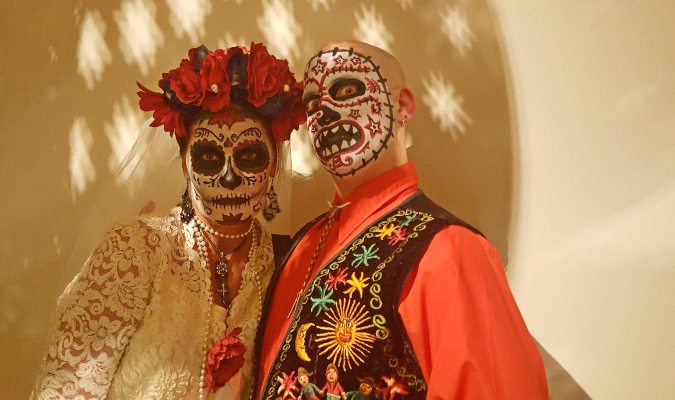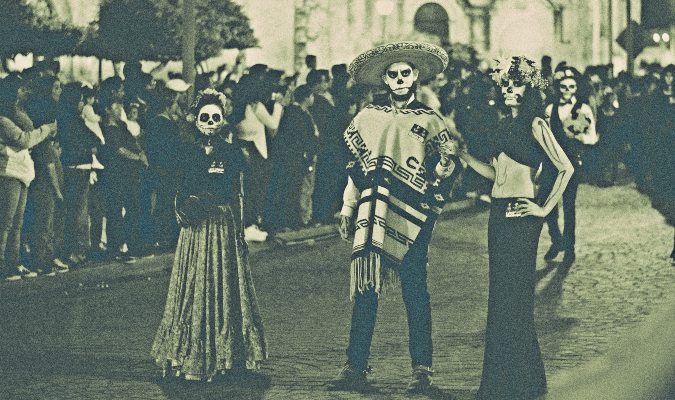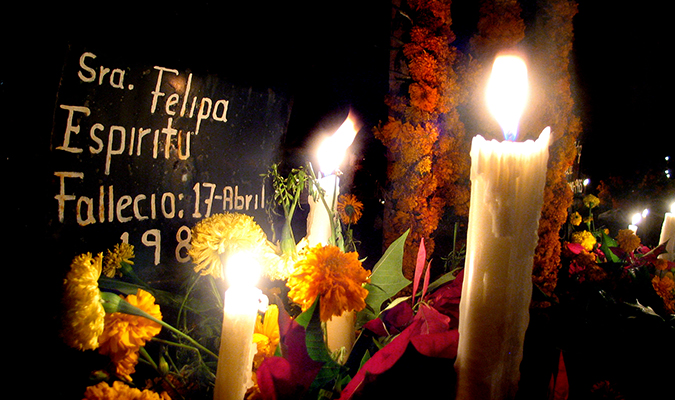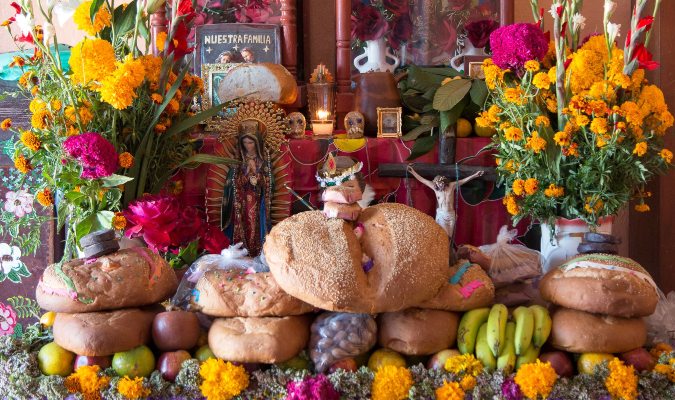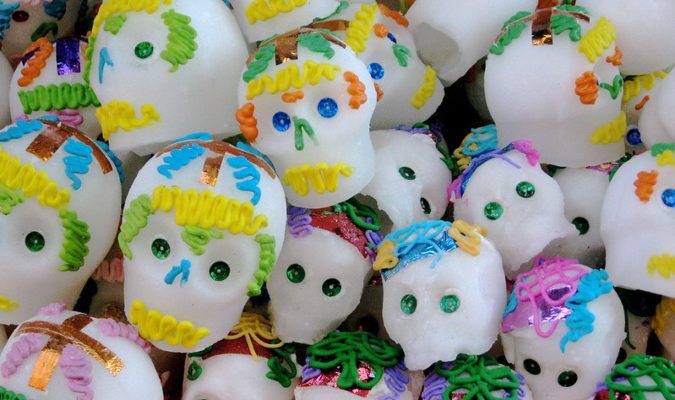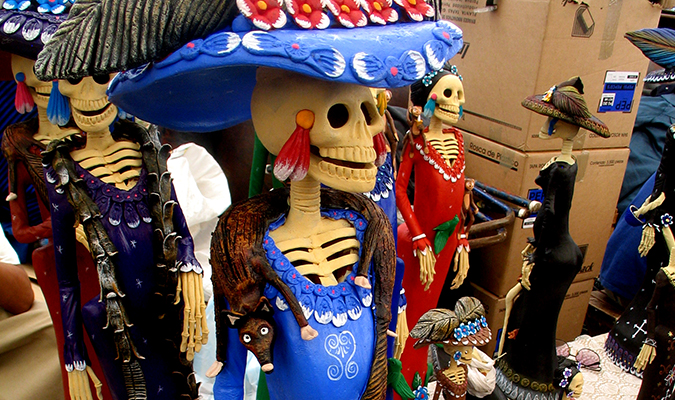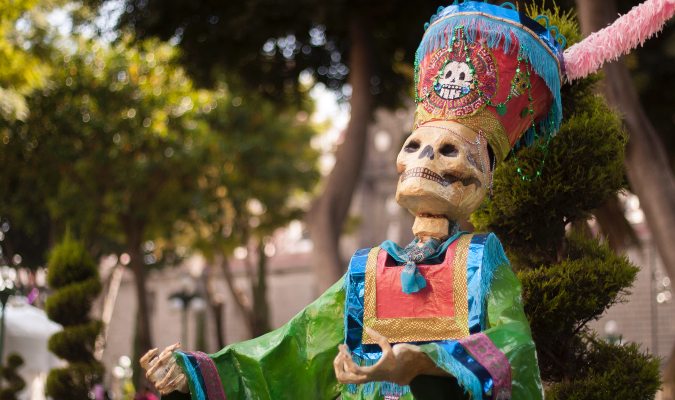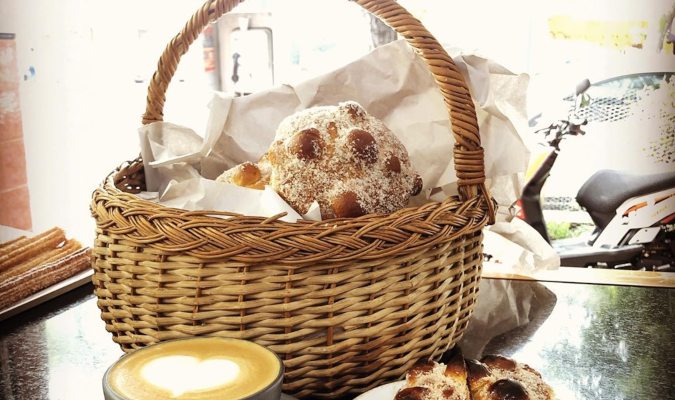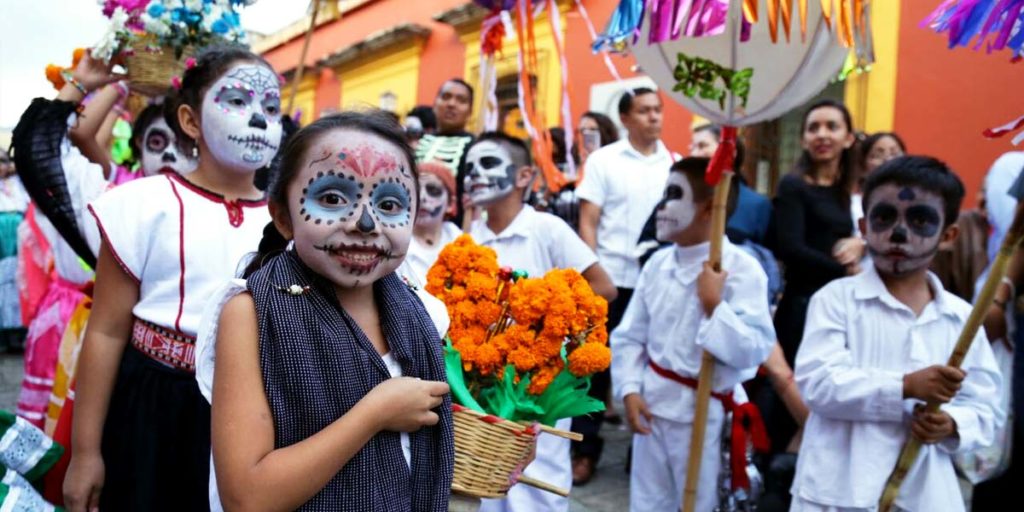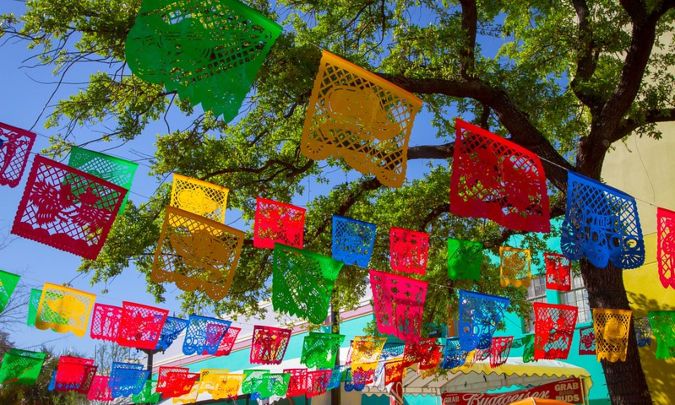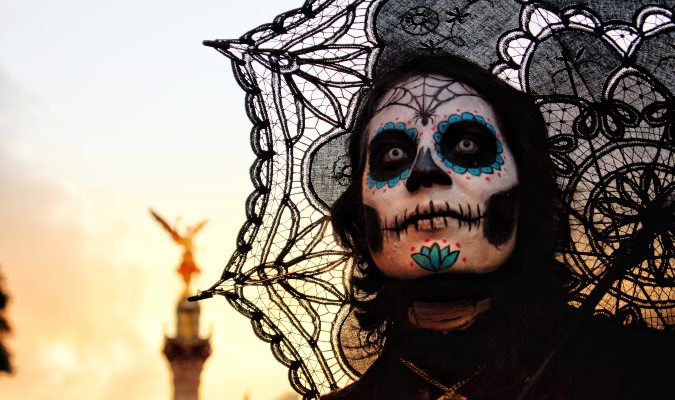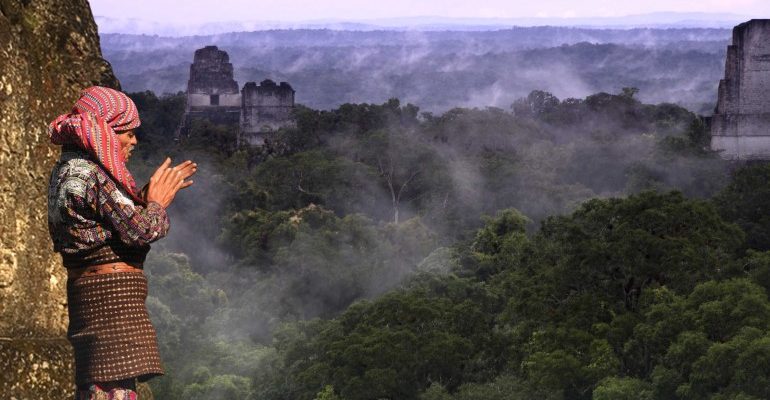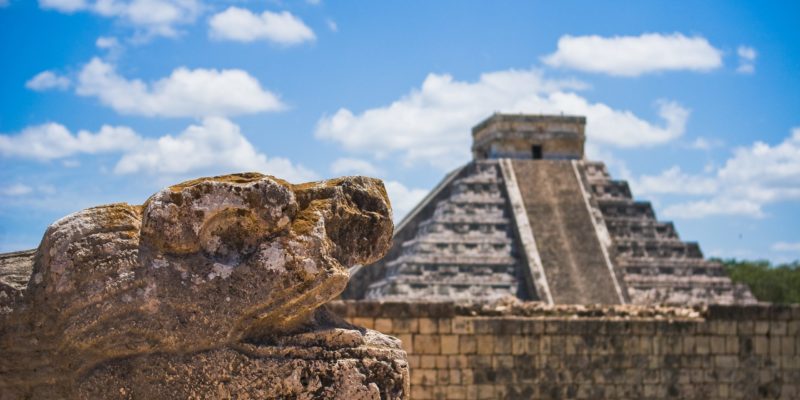Mexico City is currently a safe destination to visit. It showcases captivating beauty, a diverse…
Day of the Dead Festival
If you want to celebrate Day of the Dead in Mexico, there are some fundamentals you’ll need to know. The first – and possibly most important – is that Dia de Muertos is certainly not Halloween!
Halloween originated from an ancient Celtic festival to scare off spirits; Dia de Muertos is a celebration of lost loved ones.
It’s fair to say that due to their proximity in the calendar, and the fact both offer the chance to dress up in elaborate costumes, the separate holidays have fused in recent years.
Here’s everything else you need to know about Day of the Dead in Mexico.
Day of the Dead History
The beginnings of Day of the Dead can be found in a month-long Aztec celebration which honoured the gods of the underworld, Mictlantecuhtli and Mictlancíhuatl. Despite taking place in August, this ancient celebration has similarities to the modern Day of the Dead, particularly in the giving of offerings or ofrendas to the deceased.
In the 16th century, the Spanish conquistadores attempted to introduce Catholicism to the native people and essentially eradicate the religions of the indigenous people. They were semi-successful. While the festival moved to the beginnings of November to coincide with the Catholic All Saints Day and All Souls Day, many of the pre-Hispanic traditions continued.
When is Day of the Dead?
Day of the Dead is officially on November 2. However, the Dia de Muertos celebrations have evolved to include October 31 (Halloween) and November 1 (Dia de los Angelitos).
Day of the Dead 2020 will run from Thursday, October 31 to Saturday, November 2 – if you include Halloween. Or Friday, November 1 to Saturday, November 2 if you don’t.
Did you know: Day of the Dead is recognised by UNESCO in its List of Intangible Cultural Heritage of Humanity.
Day of the Dead Traditions
Day of the Dead traditions run from solemn rituals that pay tribute to deceased relatives to brightly coloured celebrations of incredible costumes and face painting.
While there are “Dia de Muertos traditions”, it’s also important to note that the Dia de Muertos festivities vary widely throughout the different regions of Mexico. Here are some things to look out for:
BUILDING ALTERS
The focal point for Day of the Dead celebrations are building alters to deceased loved ones. Found in family homes, cemeteries, and even in public spaces (particularly for former civic leaders). Tradition has it that these alters will help the spirits find their way back to the land of the living for Day of the Dead.
OFRENDAS
As well as building alters, friends and families will decorate them with offerings or ofrendas for their loved ones. Typical ofrendas include candles, pan de muerto (more on that later), photographs of the deceased, and their favourite food and drink. It’s not uncommon to see the dead’s favourite packet of cigarettes or the jersey of their soccer team adorning their alter.
SUGAR SKULLS
Sugar skulls have become the world-wide symbol for the Day of the Dead and, arguably, an icon of Mexico itself. You’ll see these small skulls made of sugar everywhere during the celebration. Typically decorated with colourful patterns of icing and other vibrant motifs. Though edible, they aren’t eaten but used as a decoration. Chocolate versions are also available if you’re feeling hungry.
CATRINAS
Along with sugar skulls, catrinas are Dia de Muertos’ most iconic symbol. Known as Mexico’s Grand Dame of Death, the image has become a central representation of the whole Day of the Dead festival.
The modern version of La Catrina, an upper-class female skeleton. Made popular by artist Jose Guadalupe Posada in his etching La Calavera Catrina. Throughout the Dia de Muertos celebrations you will see catrinas (or catrins if they’re male) everywhere.
CALACAS/CALAVERAS
Calacas are skeleton statues clad in human clothing; calaveras are their skull equivalent. Throughout Dia de Muertos you’ll see displays of La Catrina calacas, but also other skeletal characters as well. They’re often brightly painted, happy, and could be dancing or playing an instrument. Their joy indicates that life after death is a happy one.
PAN DE MUERTO AND OTHER FOOD
If you spend Day of the Dead in Mexico then you won’t be able to get away from its traditional foods. Central to this is Pan de Muerto. This is sugar covered bread, and is left at alters as an ofrenda. Dishes like tamales and mole negro are also enjoyed as part of the celebrations.
MARIGOLDS/CEMPASÚCHILES
Marigolds (also known as flor de muerto or cempasúchiles) are everywhere during the festivities. But most commonly found as part of the ofrendas. The belief is that these beautifully orange flowers will help bring the souls of deceased loved ones back to the land of the living.
PAPEL PICADO
Papel picado is the thin, papery flags you’ll see strung across streets and in homes. It’s the traditional flag of the Day of the Dead celebrations. Often it will have related imagery cut into the pieces.
EXTRA: MEXICO CITY DAY OF THE DEAD PARADE
Those who have seen James Bond tearing through the Mexico City streets in Spectre are forgiven for thinking that the capital’s colossal parade is traditional. In fact, this grand spectacle was an invention of Hollywood. Thanks to the film’s popularity, Mexico City now puts on a James Bondesque parade with massive floats and thousands upon thousands of attendees.
Whether you see it as an inevitable commercialisation of the celebration or a glorious way to celebrate Day of the Dead in style, there’s no doubting that it’s a truly magnificent sight. Plenty of other towns and cities through a smaller version on this parade.
What is Dia de los Angelitos?
November 1 is traditionally referred to as Dia de los Angelitos (Day of the Little Angels) in Mexico. This is the day to honour infants and children who have died. November 2 is the actual Dia de los Muertos, when families honour adults whom they have lost. It’s believed on these days, the souls of the deceased return to earth to be with their families and loved ones.
The Day of the Dead Festival is one of the highlights of our Central America Sojourn.

